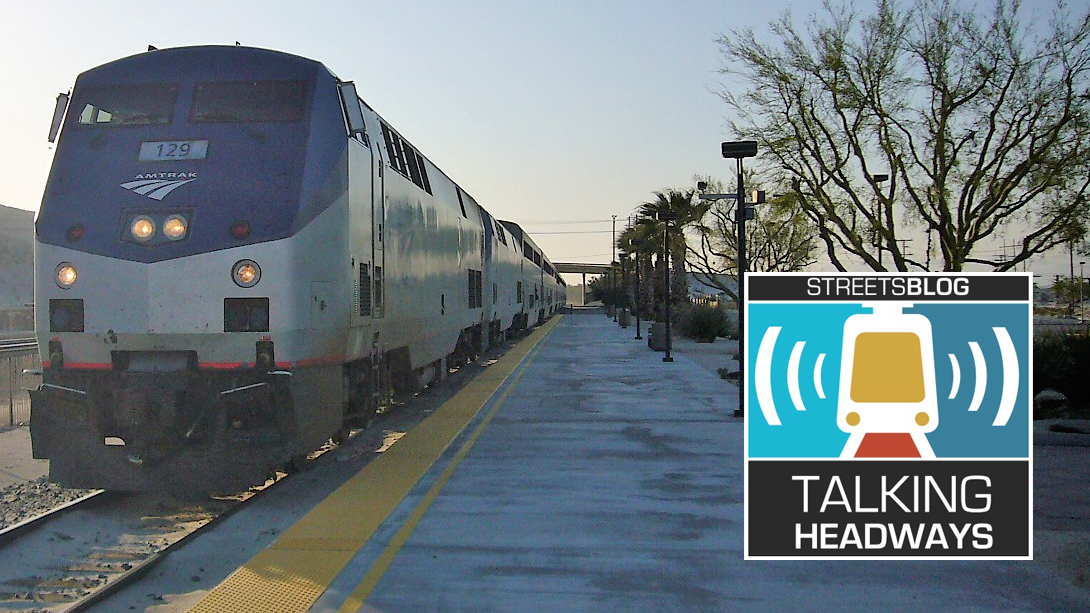This week we’re joined by Mike Christensen, Executive Director of the Utah Rail Passengers Association and a tireless advocate for intercity passenger rail. Mike chats with us about Amtrak’s expansion plans, the impact of the infrastructure bill and why things take so long to implement.
Scroll down below the audio player for an edited excerpt of our conversation, or click here for an unedited, AI-generated transcript of the entire conversation.
Jeff Wood: What does the $66 billion mean? What's the vibe like now after getting such a huge injection of cash?
Mike Christensen: Yeah, it's been very exciting, but it's also been very slow. It has been difficult and we're a little bit frustrated with the Federal Railroad Administration, [which is] overseeing all of that funding. But we also realized that they have had to staff up from basically not having any staff at all to oversee [and] build out a new program.
Jeff Wood: It's always about capacity.
Mike Christensen: Exactly. It's been been great to see that it was the Rail Passengers Association that played a huge role in getting that $66 billion into the infrastructure bill. In fact, right after the 2020 election, there was a big buzz about how the new administration wants to do this big infrastructure bill and wants to have a whole lot of funding for passenger rail, especially inner city passenger rail, in it. And yeah, it's been exciting to have all that funding available, but it's been disappointing that we haven't been able to roll out any new services yet.
One of the hugely exciting things, at least from my perspective, is that the bipartisan infrastructure law instructed the Federal Railroad Administration to perform the Amtrak long distance service study, in which I had the privilege to be able to participate. It was designed to look at the needs of our long distance system.
When you look at the current Amtrak map, you realize that there are a ton of gaps in service where there are cities that in a lot of cases had passenger rail in the past, whether it was pre-Amtrak or in the early days of Amtrak. That service has disappeared.
There definitely has been a shift in the needs or transportation needs over the last half-century, so this was really an opportunity to go back to the drawing board and look at what potential new routes would look like. I'd like to start off by saying too that the study also recognized the low hanging fruit in long distance service improvements. Two of our current long distance routes only run three times a week rather than daily. That’s the Chicago-to-New York Cardinal and the Los Angeles-to-New Orleans Sunset Limited. And when you look at the ridership performance, you would guess that a route that is only running three days a week would have a ridership reduction that would average about four-sevenths, less than typical routes, but the ridership actually performs even lower than that because of the fact that it makes it so much harder to actually plan out a trip when a train is only operating three days a week.
You almost have to memorize which days the trains are operating, so it makes it really difficult to plan trips on those routes. So the number one thing coming out of the study is to bring those services up to daily services. and that's really very low hanging fruit because it's just a matter of making sure that additional equipment is available — because the stations are already there.
Everything else is already in place to do that. The results of that study recommended adding an additional 15 routes around the country. And it's been very exciting to see new services coming out of that. For me in here in Utah, it's exciting because it would give us two additional long distance routes that would serve Utah. One that would go from Los Angeles to Denver through Salt Lake City and another that would go from Seattle to Denver through Salt Lake City.
So we're seeing a lot of connections. There's a lot of interest in wanting to be able to connect Salt Lake City to places like Boise and Las Vegas, which had service until 1997. We would love to see that restoration. There's been a bit of concern about the long distance study. One of the big concerns is that it is on a timeline right now, where we wouldn't expect to see any of these new services rolled out until at least 2040.
Jeff Wood: What?!
Mike Christensen: So, the disappointing thing is that, yeah, the timeline and the reason for that lengthy timeline is we don't have the equipment available. We don't have the rolling stock available yet. And part of that is because we're already in the process of having to replace all of our rolling stock that's on our 15 long distance routes.
We would need to, on top of that, come up with additional equipment for another 15 routes. So we're hoping that we can build enough momentum and we can be able to push Congress enough to fund what needs to be funded in order to roll out all of the service sooner.
Jim Matthews, who's the president and CEO of Rail Passengers Association, he said that — yeah, he's very disappointed by this minimum 15-year timeline. And it's like, we were able to put a man on the moon in much less time. This is not as complicated as going to the moon. It's basically all about political willpower.
If we can get Congress fired up, hopefully we can cut this down to about an eight-to-10-year timeline and see new services rolling out a lot sooner.






